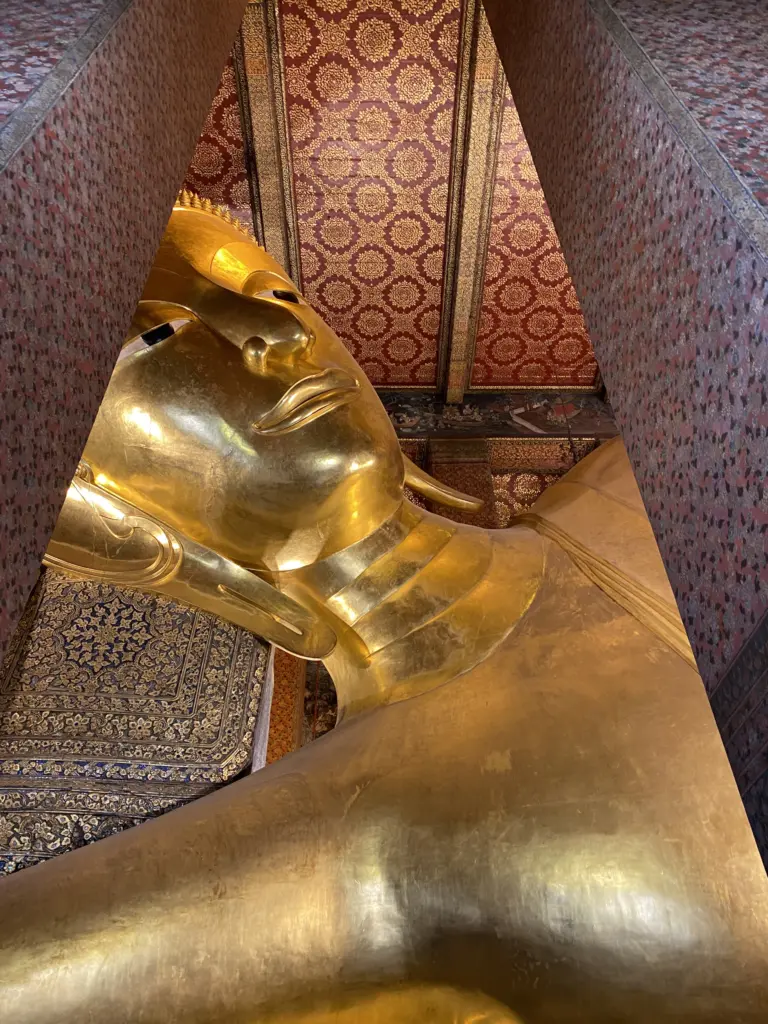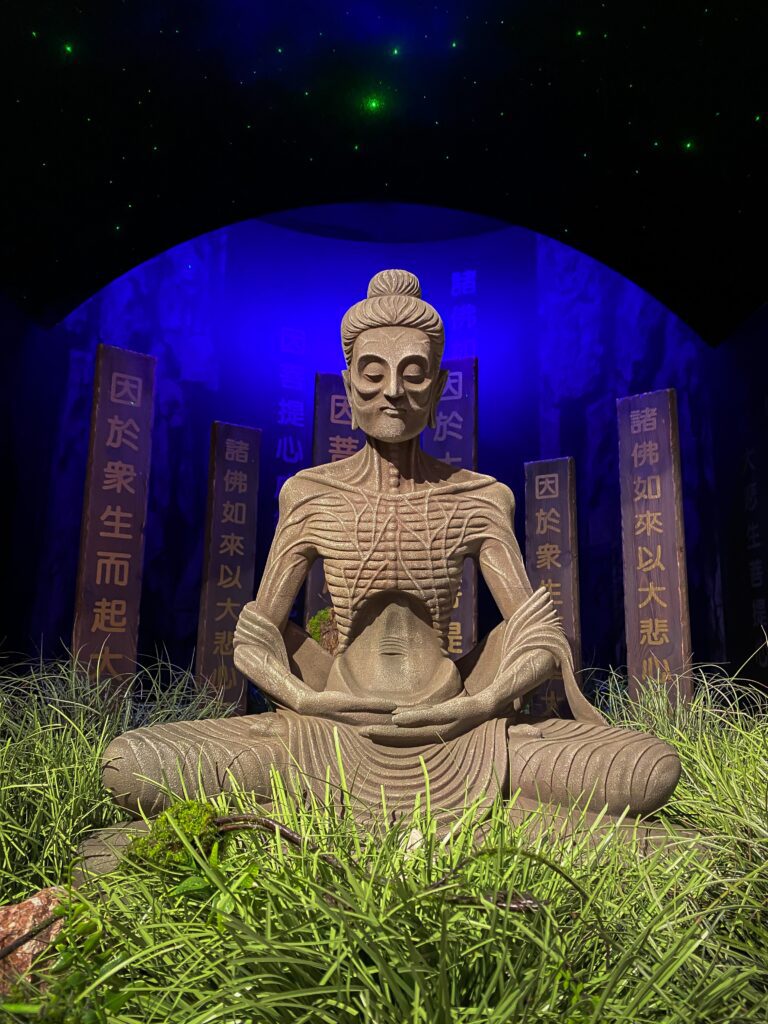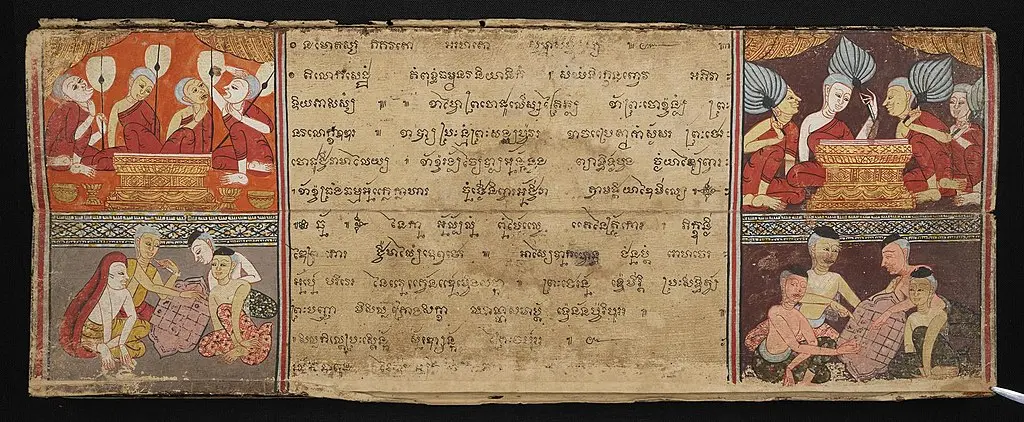Today, we’re going to explore an ancient language that, while no longer spoken in day-to-day conversation, continues to resonate with great spiritual significance. That’s right, I’m talking about Pali, an intriguing tongue that bridges the divide between the here-and-now and a period lost to time.
Pali is a language steeped in history, embraced by the faithful, and treasured by scholars. Just like Sanskrit, it has served as the medium for some of the most profound spiritual teachings in history and continues to hold sway in the realm of Buddhist thought.
In this article, we’ll dig into the roots of Pali, examine its connection to Buddhism, and understand its position in linguistic history from it’s rise to it’s decline.
Table of Contents
Toggle
What is the Origin of Pali?
Pali’s roots can be traced back to the Indian subcontinent, and it’s often associated with the wave of change that occurred during the “Second Urbanization” period around the 6th century BCE.
This was a time when new ideas, philosophies, and religions were flourishing, including the teachings of Buddha himself.
But here’s where things get a little fuzzy. Pali isn’t directly descended from Sanskrit, the classical language of ancient India. It’s more like a close cousin, part of a group of languages known as Prakrits.
These were the everyday languages spoken by ordinary people, as opposed to the more formal and scholarly Sanskrit.
Now, which particular Prakrit Pali emerged from is a matter of debate. Some scholars propose it evolved from the Magadhi Prakrit spoken in the eastern region of India, where Buddha lived and taught.
Others suggest it may have originated in the west of India, pointing to linguistic similarities with the Maharashtri Prakrit.
Another theory posits that Pali is a form of “Buddhist Hybrid Sanskrit”, a mix of different dialects that came together in the Buddhist scriptures. This makes Pali not a regional language, but a “lingua franca” of sorts for the early Buddhist community.
What adds to Pali’s mystery is that we don’t have any evidence of it being written down until centuries after Buddha’s time, in Sri Lanka.
The early Buddhist teachings were passed down orally, and it seems Pali was used primarily as a language of religious instruction and scholarship.
So, Pali’s origins remain shrouded in a bit of mystery. But one thing is clear: this ancient language played a crucial role in preserving and disseminating one of the world’s most influential spiritual teachings.

Pali and Buddhism
Pali and Buddhism are intricately connected! This ancient language served as the original canvas upon which the teachings of Buddha were written, preserving the wisdom and insights that continue to guide millions of people today.
Buddha himself was known for his practical approach to teaching. He believed in communicating his teachings in a way that was accessible to everyone, regardless of their social status or educational background.
Instead of using the scholarly Sanskrit, he chose to teach in the vernacular languages of the people he was addressing. It’s believed that many of these early discourses were later transcribed into Pali.
Pali’s role didn’t stop at the scriptural level though. It became the standard language of Theravada Buddhism, one of the major branches of Buddhism that spread across Southeast Asia (the other two are Mahayana and Vajrayana).
From Sri Lanka to Myanmar, Thailand to Cambodia, Pali shaped the way Buddhism was taught, studied, and practiced. It provided a common linguistic thread, enabling the transmission of Buddhist thought across different countries and cultures.

The Pali Canon (Tripitaka)
In the heart of Theravada Buddhism lies the Pali Canon, also known as the Tipitaka, which means “Three Baskets”.
As one of the oldest and most comprehensive collections of Buddhist teachings, it holds a revered status. Its pages, etched with the ancient Pali language, carry the foundational teachings and guidelines for leading a life in accordance with Buddha’s path to enlightenment.
The Pali Canon is divided into three distinct sections, or “baskets”, each carrying its own significance.
- Vinaya Pitaka, the first basket, is a detailed code of conduct for Buddhist monks and nuns. It encompasses everything from daily routines to complex disciplinary rules.
- Sutta Pitaka, the second basket, is perhaps the most well-known of the three. It contains discourses attributed directly to Buddha and his closest disciples, covering a vast range of subjects from morality to philosophy to meditation. Among its notable texts are the Dhammapada, a poetic work brimming with wisdom, and the Jataka tales, stories about Buddha’s past lives that teach ethical lessons.
- Abhidhamma Pitaka, the third basket, ventures into the realm of metaphysics and deep philosophical analysis. It dissects human existence and the nature of reality in minute detail, offering insights into the intricate workings of the mind and the universe.
To Theravada Buddhists, the Pali Canon is the most authoritative text, a beacon of wisdom that guides their spiritual journey. It is seen as the most direct record of the Buddha’s teachings, with many considering it to be complete in itself. Its teachings are meticulously studied and recited, shaping the doctrine and practices of Theravada Buddhism.

How is Pali Used in Buddhism?
Though no longer a spoken language, Pali’s soothing syllables still echo in Buddhist temples around the world.
- Recitations of Pali scriptures during religious ceremonies, such as the chanting of the Dhammapada or excerpts from the Sutta Pitaka, form the backbone of many Theravada Buddhist rituals. These recitations are often done in a melodic, rhythmic chant. I was able to experience this auditory marvel while I was visiting Wat Pho in Bangkok, the monks were seated on a higher platform as they chanted non-stop.
- Pali chants are used in daily rituals, such as morning and evening mantras and prayers.
- Pali is also used in significant life events, such as birth, marriage, and death. For instance, during Buddhist funerals, Pali chants are used to wish for the departed to attain Nirvana.

Did the Buddha Speak Pali?
This is a question that has puzzled scholars for centuries. The consensus among historians is that the exact language spoken by Gautama Buddha remains uncertain. It’s generally agreed that the Buddha likely spoke an ancient Indian dialect similar to, but not exactly, Pali or Sanskrit.
The Buddha lived around the 5th to 4th century BCE, in a region that is now Nepal and India. At that time, a multitude of dialects, known as Prakrits, were spoken across the Indian subcontinent. The Buddha would have spoken a regional Prakrit that was common among the people of his area, often referred to as Magadhi Prakrit.
The Pali language, as we know it, appears in texts that were written down centuries after the Buddha’s passing. The Buddhist teachings were initially transmitted orally. It is believed that Pali became the chosen language for these oral traditions because of its simplicity and clarity, making it easier for the teachings to be memorized and recited.
Therefore, while we can say that the Pali language carries the essence of the Buddha’s teachings, it’s not completely accurate to say that the Buddha himself spoke Pali.

Linguistics of Pali
Pali, despite no longer being a common spoken language, serves as a rich source of study for those keen to delve into the ancient cultures of South Asia.
The structure and features of Pali language reveal a great deal about the evolution of Indo-Aryan languages.
Pali, like Sanskrit, is a member of the Indo-European language family, and its study helps scholars trace the transformations within this language group. Its sentence structure, morphology, phonology, and vocabulary have shed light on the various stages of the Indo-Aryan languages.
Plus, studying Pali provides insights into how languages change and evolve over time.
Pali's Influence on Other Languages
Pali has also had a significant influence on many languages, particularly in South and Southeast Asia:
-
Sri Lanka: The Sinhalese language, spoken by the majority ethnic group in Sri Lanka, has been significantly influenced by Pali. Many Pali words were incorporated into Sinhalese, particularly relating to religion, law, and administration. The earliest inscriptions and literary works in Sinhalese show strong Pali influence.
-
Thailand: Pali has also had a considerable influence on the Thai language. Many Pali words, particularly those related to Buddhism, philosophy, and administration, have been integrated into Thai. Pali is still used in religious and royal ceremonies in Thailand.
-
Myanmar: The Burmese language also absorbed a significant amount of Pali vocabulary, especially in the domains of religion, culture, and administration. The Burmese script was also modeled after the script used to write Pali.
-
Laos: In Laos, the Lao language has also been influenced by Pali, especially in the domains of religion and administration.
-
Cambodia: Pali has left its mark on the Khmer language as well, contributing many words related to religion, culture, and government.

Is Pali Derived from Sanskrit?
It’s a common question to wonder whether Pali is derived from Sanskrit, given their shared Indo-European roots.
While Pali and Sanskrit share similarities, Pali is not derived from Sanskrit. Instead, they are related languages that developed along different paths within the same language family.
Pali and Sanskrit are both part of the Indo-Aryan group of languages, which also includes languages like Hindi, Bengali, and Punjabi. They share common features due to this shared heritage, such as similar grammatical structures and many similar words. This can make it seem like one is derived from the other, but the relationship is more accurately described as sibling-like rather than parent-child.
There’s also the historical context to consider. During the time of the Buddha, around the 5th century BCE, Sanskrit was not the common spoken language. Instead, it was the language of the learned and the elite, used for religious rituals and scholarly discourse. On the other hand, Pali, often described as a Prakrit (or “natural”) language, was closer to the languages spoken by the common people in the Ganges plain.

Why Did the Pali Language Disappear?
Pali, like many ancient languages, eventually fell out of everyday use. It was gradually replaced by vernacular languages in the regions where it was once prevalent. This is simply a natural linguistic evolution that occurs over centuries, where languages morph and change, and some even become extinct.
A variety of factors contributed to the decline of Pali as a spoken language. Among these, the spread of Mahayana Buddhism, which often used Sanskrit and local languages for its texts, played a significant role.
Political and cultural changes, such as the rise and fall of empires and the migration of people, also impacted the use and status of Pali.
Preservation efforts for Pali have been significant though! Various academic institutions worldwide offer programs in Pali studies, often as part of a broader curriculum on Buddhist Studies or South Asian Studies.
Buddhist monastic education systems in countries like Sri Lanka, Myanmar, and Thailand also teach Pali, considering its understanding essential for studying the scriptures.
Pali may be considered a “dead” language in the sense that it’s no longer used as a common tongue for everyday communication. But make no mistake, it’s alive and well in the realm of academic and religious studies, and continues to be highly relevant today.













